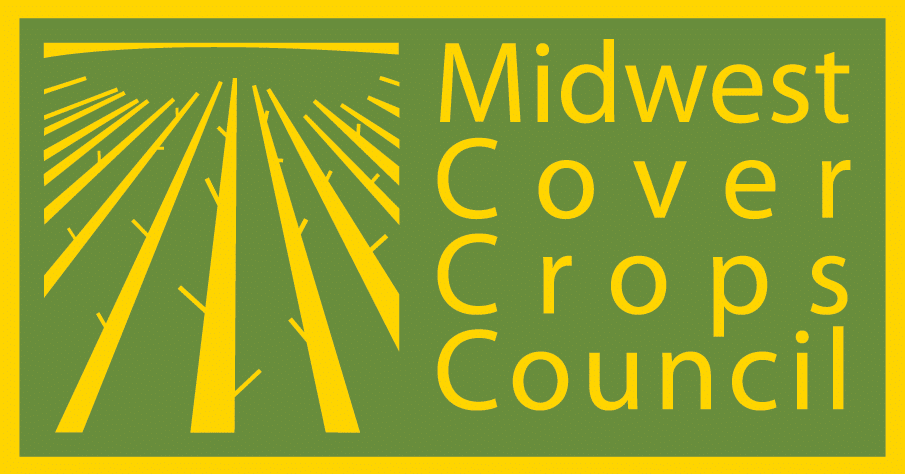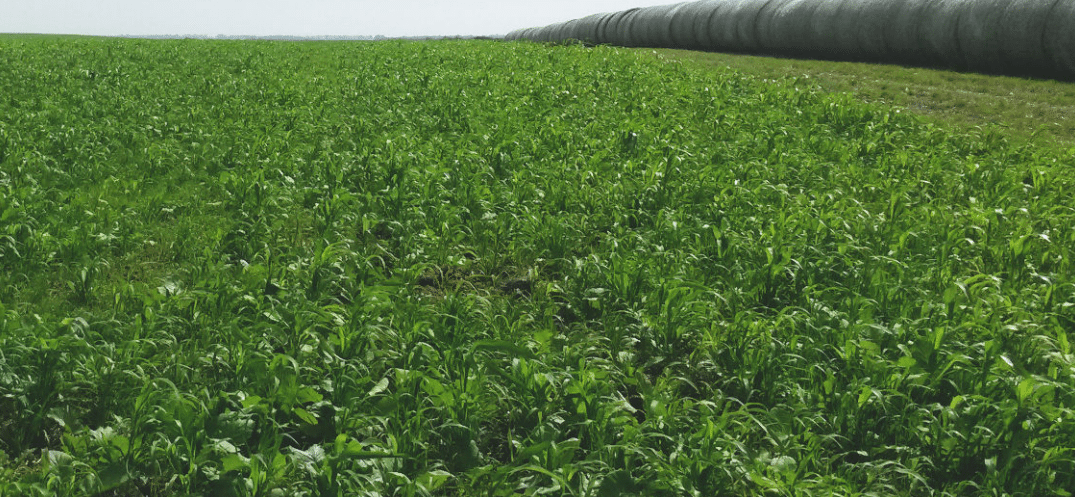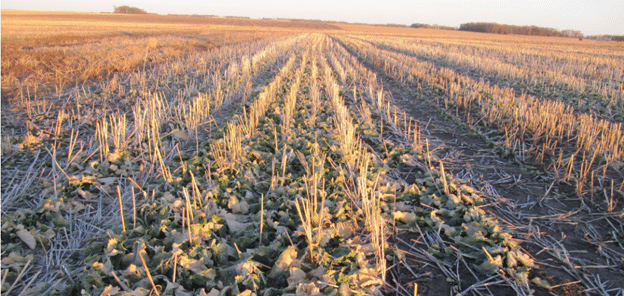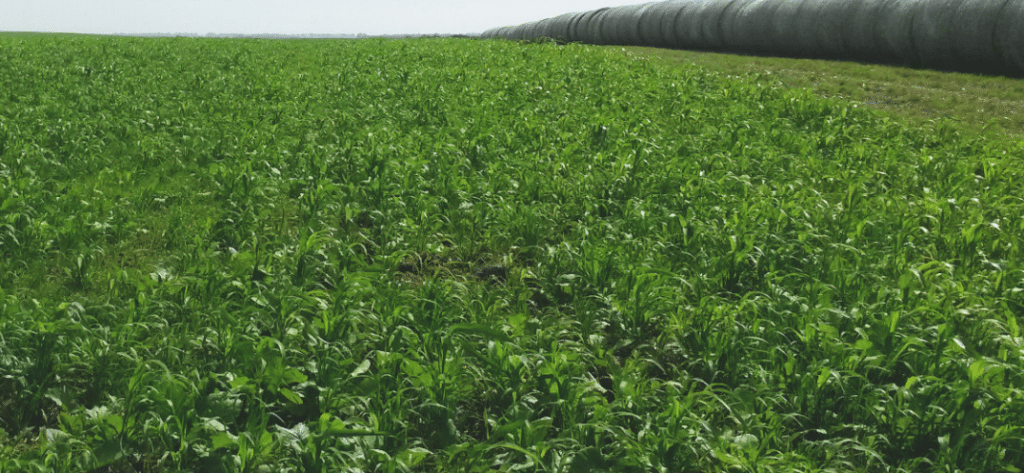Midwest Cover Crops Council (MCCC-137)
University of Nebraska Extension (G2352)
This publication is intended to provide a starting point for farmers who are new to growing cover crops. With experience, farmers may fine-tune the use of cover crops for their systems.
Introduction
This publication provides an introductory approach to integrating cover crops following wheat and before corn or soybeans. These cover crops can have many benefits, such as erosion control, improved soil health, weed suppression, and quality forage production.
Planning and Preparation
- Planning—Start planning early. Educate yourself by talking to experienced cover crop users, attending conferences and field days, and reading as much as possible about cover crops. Start small and determine your purpose and objectives for using cover crops. If needed, arrange for equipment, additional labor, or custom operators.
- Residual herbicides—Consult your agricultural supplier regarding residual wheat herbicides that could cause concerns for newly planted cover crops. If cover crops will be grazed, additional herbicide restrictions may apply.
- Seed purchase—Order your seed early from a reputable seed supplier to ensure a good germination rate, purity of seed, and that all seed has a seed analysis tag.
Summer Work
- Dryland vs. irrigation—Irrigation allows for flexibility in managing planting dates and provides some insurance against dry planting conditions. Dryland seedings should occur immediately following wheat harvest in July for warm- and cool-season mixes. If delayed until August, consider changing to a cool-season mix. Contact your local Extension personnel for more information.
- Residue management—Uniform spreading of chaff and straw is essential during wheat harvest in order to avoid interfering with the cover crop seeding operation.
- Nitrogen management—If growing a forage crop, a nitrogen application before seeding a cover crop may be beneficial to counteract tie-up caused by stubble. Consider taking soil samples after the wheat harvest to determine nitrate-nitrogen levels. Depending on the prior nitrogen management, wheat yield, and weather, some residual nitrogen should be accounted for. The addition of nitrogen (up to 50 lbs. N/acre) may be beneficial in increasing biomass production of many of the cover crops, e.g., forage sorghum, sorghum-sudangrass.
- Wheat curl mite—Volunteer winter wheat and some species in diverse cover crop mixes planted after wheat (e.g., sorghums, millets, oats, barley) can serve as a host for wheat curl mites. These mites are vectors for the wheat streak mosaic virus complex. Planting new winter wheat fields within two miles of this existing field may lead to yield losses in winter wheat fields. Applying a burndown herbicide before planting the cover crop may be an option to control volunteer wheat and reduce competition from weeds. Please read the herbicide label and consult with an agricultural supplier or local Extension personnel for more information.
- Planting cover crop—No-till drill into stubble at least 45–60 days before the 50% frost date for your area. For most of Nebraska, this mix will need to be planted before early September. Use the Cover Crop Selector Tool (in Resources section) for more precise dates for your county. For the highest cover crop productivity, seed immediately after wheat harvest. Seeding depth is limited by the brassica species in the mix (rapeseed) as these are small seeds. A depth of 0.50 inch is best.
- Seeding rate—Oats are used in most diversified mixes because they are an excellent carrier for the other seeds. Seeding rates per acre are: 16–24 lbs. of oats, 4 lbs. of forage sorghum or sorghum-sudangrass, 2 lbs. of pearl millet, 1 lb. of grain sorghum, 1 lb. of rapeseed, and 4 lbs. of buckwheat.
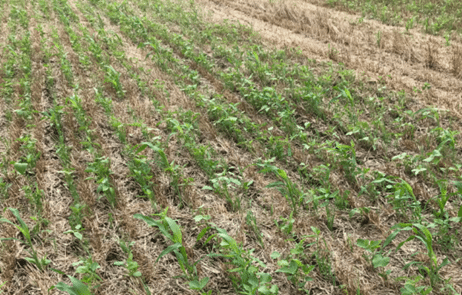
Spring Work
- Winterkill—All species in the mixture will usually winter-kill with the onset of hard freezes, which will eliminate the need for any changes to spring management.
- Cover crop termination—If you have something in the mix that overwinters or germinates and emerges in the spring, the general recommendation is to terminate the mixture approximately two weeks prior to planting the next cash crop. Termination can be achieved using a full rate of glyphosate.
Resources
Cover Crop Selector Tool —available from the Midwest Cover Crops Council, https://www.midwestcovercrops.org
Post Corn, Going to Soybean: Use Cereal Rye (Nebraska Cover Crop Recipe series, MCCC-107)
Post Corn Silage, Going to Corn: Use Cereal Rye (Iowa Cover Crop Recipe series, MCCC-121)
Post Corn Silage, Going to Soybean: Use Cereal Rye (Iowa Cover Crop Recipe series, MCCC-122)
Managing Residual Herbicides with Cover Crops (Institute of Agriculture and Natural Resources, Univ. of Nebraska)
How Herbicide Labels Restrict Using Cover Crops as Forage (Institute of Agriculture and Natural Resources, Univ. of Nebraska)
Corn and Soybean Herbicide Options for Planting Cover Crops for Forage in Fall (Institute of Agriculture and Natural Resources, Univ. of Nebraska)
Residual Herbicides and Fall Cover Crop Establishment (Purdue Extension Weed Science publication)
Terminating Cover Crops: Successful Cover Crop Termination with Herbicides (Purdue Extension publication WS-50-W)
Wheat Stem Maggot Adult Monitoring: A Pest of Cover Crop-to-Corn Transitions (Institute of Agriculture and Natural Resources, Univ. of Nebraska)
Research Update on Cover Crops after Winter Wheat Harvest (Institute of Agriculture and Natural Resources, Univ. of Nebraska)
Authors
Gary Lesoing and Katja Koehler-Cole, University of Nebraska-Lincoln (Note: This publication was adapted with consent from MCCC under a joint project to produce customized introductory guidance about cover crops for all member states/provinces.)
Reviewers
Caro Córdova, Nathan Mueller, and Jennifer Rees, University of Nebraska-Lincoln; Eileen Kladivko, Purdue University; Anna Morrow, Midwest Cover Crop Council
The Midwest Cover Crops Council (www.midwestcovercrops.org) aims to facilitate widespread adoption of cover crops throughout the Midwest by providing educational/outreach resources and programs, conducting new research, and communicating about cover crops to the public.
Funding for this project was provided by McKnight Foundation.
December 2022
The U.S. Department of Agriculture (USDA) prohibits discrimination in all its programs and activities on the basis of race, color, national origin, age, disability, and where applicable, sex, marital status, familial status, parental status, religion, sexual orientation, genetic information, political beliefs, reprisal, or because all or a part of an individual’s income is derived from any public assistance program. (Not all prohibited bases apply to all programs.) Persons with disabilities who require alternative means for communication of program information (Braille, large print, audiotape, etc.) should contact USDA’s TARGET Center at (202) 720-2600 (voice and TDD). To file a complaint of discrimination write to USDA, Director, Office of Civil Rights, 1400 Independence Avenue, S.W., Washington, D.C. 20250-9410 or call (800) 795-3272 (voice) or (202) 720-6382 (TDD). USDA is an equal opportunity provider and employer. ©2022 by MCCC. All rights reserved.
